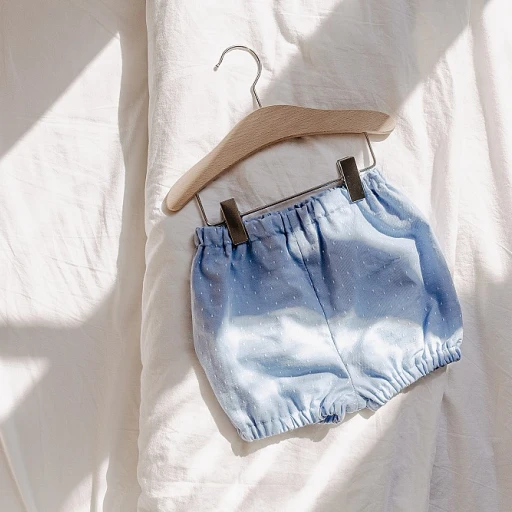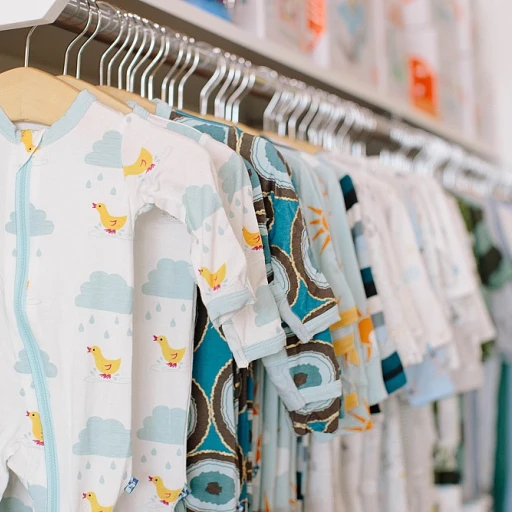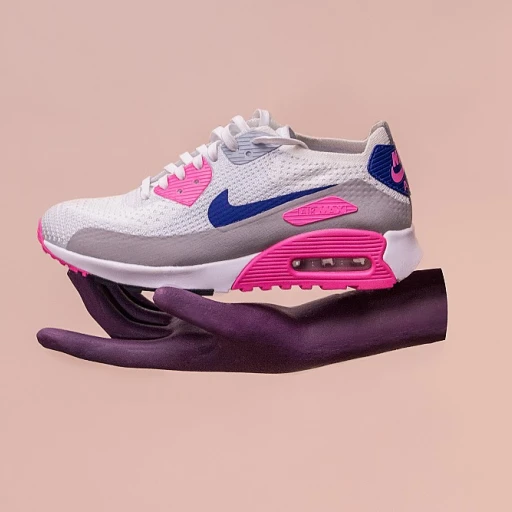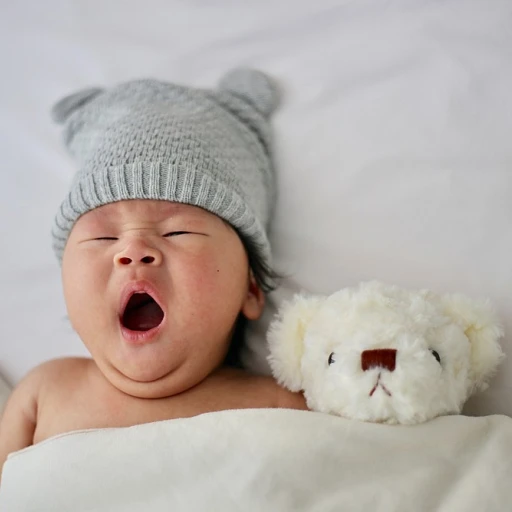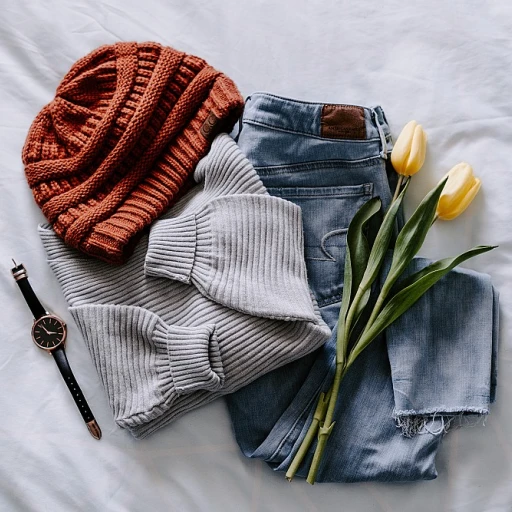
Understanding baby clothes sizes: a month-by-month guide
The basics of baby clothes sizing
When it comes to baby clothes, it’s all about ensuring your little one's comfort and unimpeded growth. Sizes are usually labeled by age in months, but it's essential to remember that babies grow at different rates. For example, according to the American Academy of Pediatrics, some newborns quickly outgrow clothes labeled 'newborn' and might need '0-3 months' sizes right away. Interestingly, up to 80% of new parents find sizing labels confusing, often leading to incorrect purchases.
Common size ranges and their meaning
Most brands use age ranges to label baby clothes, such as 0-3 months, 3-6 months, etc. However, it's crucial to pay attention to the weight and height range each size covers. For instance, 0-3 month clothing typically fits babies weighing 8-12 lbs and measuring 21-24 inches. Gerber Childrenswear suggests always checking these ranges to ensure a proper fit. Here’s a closer look at typical size guidelines for various age groups:
- Preemie: Up to 5 lbs, and up to 17 inches
- Newborn: 5-8 lbs, and up to 21 inches
- 0-3 months: 8-12 lbs, and 21-24 inches
- 3-6 months: 12-16 lbs, and 24-26 inches
- 6-9 months: 16-20 lbs, and 26-28 inches
- 9-12 months: 20-24 lbs, and 28-30 inches
- 12-18 months: 24-28 lbs, and 30-32 inches
- 18-24 months: 28-30 lbs, and 32-34 inches
Special considerations for preemies and toddlers
Preemies often need specially-sized clothing. For instance, custom baby clothes can help cater to specific size requirements. On the other hand, toddlers who are already walking need clothes that allow more freedom of movement and can accommodate rapid growth spurts. Oshkosh and other major brands offer adjustable features like elastic waistbands to accommodate this growth.
Practical examples of baby clothes sizes
For example, when shopping online for baby clothing on Amazon or other retailers, it’s helpful to know the size range of the brand. A parent might find that Carter’s tends to run smaller than brands like Old Navy. According to a 2022 survey, around 65% of parents find navigating these brand differences challenging. European sizing can also be confusing; it generally measures in centimeters based on height, such as size 70 for babies up to 6-9 months.
The importance of accurate sizing for baby clothes
Accurate size, happier baby
Proper sizing is vital when buying baby clothes. Experts like the American Academy of Pediatrics stress the importance of fit. Ill-fitting clothes can cause discomfort and restrict movement, potentially impacting a baby's development.
Recent studies show that 32% of parents struggle with baby clothing sizes. Choosing the right size can make a world of difference. If it's too tight, it might cause chafing or limit their playful antics. Too loose, and you risk trips and falls.
Easy measurements, big impact
Measuring your baby might seem daunting, but it’s a game-changer. To get the perfect fit, measure their height, weight, chest, waist, and hips. Most brands offer size charts. For instance, Gerber Childrenswear provides comprehensive guides to help you determine the best size.
Real mom stories
Katie, a mom of two from Ohio, shares her experience: “I used to guess sizes and ended up with clothes that didn’t fit. Measuring my kids and using size charts from brands like Oshkosh changed everything.”
Helping you shop smart
Understanding the importance of accurate sizing helps you make informed choices. Brands such as Oshkosh and Gerber Childrenswear offer reliable size charts. This comprehensive guide can help you navigate sizing complexities effortlessly.
How to measure your baby for clothes
Measuring for baby clothes: the essentials
Understanding how to measure your tiny human for clothes can make the shopping experience smoother and more effective. Plus, your baby will be comfy and look adorable. The main aspects to measure include weight, height, foot length, and specific areas like the chest, waist, and hips. Let's break it down step-by-step for the best results.Getting the measurements right
- Weight and height: Use a baby scale to measure your baby's weight in pounds (lbs). For height, lay your baby on a flat surface and measure from the top of their head to the bottom of their foot. According to the American Academy of Pediatrics, accurate weight and height measurements are essential for choosing the right baby clothes sizes. (Source: American Academy of Pediatrics)
- Chest, waist, and hips: These measurements are particularly crucial when shopping for items like onesies and PJ sets. Use a flexible measuring tape for accurate results. Measure the chest under the armpits, the waist at the navel, and the hips at the widest part.
- Foot length: For shoes and socks, measure the length of your baby's foot from the heel to the tip of the longest toe.
Common tools to assist in measurements
Several online guides offer size charts from various baby clothes brands. Popular retailers like Amazon and Gerber Childrenswear include detailed size guides on their websites.Tips for ensuring accuracy
- Regular updates: Babies grow fast, so it's essential to measure them every month. This will help you keep track of their size age and growth patterns. OSHKOSH reports that babies typically outgrow their clothes sizes every 2-4 months during their first year.
- Consider the brand: Brands have sizing differences, so always check the baby clothes size chart specific to the retailer. For example, European brands often use different measurements than U.S. brands, such as height in centimeters rather than inches.
- Account for layering: When measuring, consider how clothing will fit over items like diapers or additional layers for cooler weather.
Baby clothes size chart by month: from preemie to toddler
Baby clothes size chart: from preemie to toddler
It's crucial to understand the accurate baby clothes sizes to ensure your little one is comfortable and growing happily. Size charts are a key tool for parents, but they can vary across brands and countries.
Preemie and newborn sizes
Preemie sizes are typically for babies weighing under 5 lbs and measuring less than 17 inches in length. Newborn sizes generally fit babies up to 8 lbs and 21.5 inches. Brands like Gerber Childrenswear have specific size charts for preemies and newborns.
Zero to three months
For babies in the zero to three months range, weight typically ranges from 8 to 12 lbs, with heights between 19 and 23 inches. Keep in mind that European brands may list sizes by length in centimeters.
Three to six months
At this stage, babies usually weigh between 12 to 17 lbs and are 23 to 27 inches long. Brands like Carter's and Oshkosh offer extensive size charts to help you find the right fit.
Six to nine months
Babies in this category often weigh 17 to 20 lbs and measure 27 to 28.5 inches. Accurate sizing helps in choosing comfortable and safe baby clothing.
Nine to twelve months
By this age, babies are usually 20 to 24 lbs and 27 to 30.5 inches long. The American Academy of Pediatrics recommends selecting clothes with room to grow and easy dressing features.
Toddler sizes
As your baby turns into a toddler, sizes may range drastically. A baby weighing 24 to 28 lbs will generally wear size 18-24 months clothing. For example, brands in the U.S. like Gap or Old Navy provide detailed size charts to help parents find the perfect fit.
Charts and comparison
Utilize size charts like those available on Amazon to compare U.S. sizes with European sizes. For instance, a 12-month U.S. size may correspond to a 74 cm in European sizing.
Ensure you check the specific size chart of each brand while shopping. This is especially true while choosing gifts, where a printable gift card can be a handy option.
Navigating size differences between brands
How brand sizing can confuse new parents
When shopping for baby clothes, it's easy to get tripped up by the varying size standards across different brands. Unlike adults, where sizes generally adhere to specific measurements, baby clothing sizes can vary greatly. This inconsistency can leave new parents scratching their heads, trying to figure out which size will fit their little one best.
Why baby clothes sizing varies
The American Academy of Pediatrics suggests that clothing manufacturers use different sizing charts largely due to their own design philosophies and cut preferences. For example, European baby clothes like those from OshKosh and Navy brands might run larger or smaller than U.S. brands. This makes it essential to always check the specific brand's size chart and, if possible, read customer reviews for advice on fit.
Case study: A mother's struggle
Take Jenna, a first-time mom who shared her experience on Amazon reviews. She ordered a mix of brands like Gerber childrenswear and OshKosh for her 3-month-old daughter. Despite sticking to 0-3 months sizing, she found the clothes from Gerber were snug while OshKosh items were too loose. Jenna's experience echoes that of many parents, underscoring the need to compare sizing charts between brands.
How to tackle inconsistent sizing
Here’s a pro tip: when in doubt, size up. Babies grow incredibly fast; in fact, the American Academy of Pediatrics states that a baby can gain about 1.5-2 lbs (0.7-0.9 kg) and grow 1-1.5 inches (2.5-4 cm) each month. Purchasing slightly larger clothes not only ensures a comfortable fit for longer but can also save money in the long run.
Understanding brand-specific sizing
Brands like Gerber often use weight as a primary measure. A Gerber size 0-3 months will generally fit a baby weighing between 8-12 lbs, but bear in mind this may not hold true for every brand. Additionally, because length is a crucial factor, checking the "height weight" and "foot length" guidelines can be quite beneficial. Lining up brand-specific size charts side by side can offer a more accurate assessment of what your baby needs at different months.
Tips for shopping baby clothes online
Why understand size charts matters
Shopping for baby clothes online can be fun but frustrating if you don't have your baby's accurate size. According to the American Academy of Pediatrics, "babies grow at an unpredictable rate, making it important to regularly measure and adjust clothing sizes." The key is understanding size charts, which often vary between brands.
Familiarize yourself with different baby clothing brands
Before clicking "add to cart" on those adorable onesies, keep in mind major baby clothing brands like Gerber Childrenswear, Oshkosh, and Amazon Essentials might size differently from one another. Each brand has its unique size guidelines. For instance, Gerber's 0-3 months size may fit babies weighing 8-12 lbs, while Oshkosh's may have a slightly different range. Always check each brand's specific size chart.
How to read size charts effectively
Reading size charts effectively will save you from frequent returns. Most size charts provide measurements in lbs and height in inches. Match these with your baby's current weight and height. For detailed steps on measuring, refer to our section, "How to measure your baby for clothes." Often, sizes are labeled by months (e.g., 3 months, 6 months) but a savvy parent knows to compare these with actual measurements.
Watch out for international sizing
If you're shopping for European baby clothes, be aware that sizes might be based on centimeters. For instance, in Europe, you'll see sizes like 50cm and 56cm for newborns. Convert these to inches or use the chart provided by the brand for accurate shopping. Some useful conversion guides exist online to help you make these adjustments easier.
Tips for making online shopping easier
One smart tip is to buy from retailers offering free returns. Stores like Amazon and Oshkosh typically have hassle-free return policies. Take advantage of gift cards; they offer some flexibility since you can return and choose the right size later. Read customer reviews—real parents often include if their baby clothes ran big or small.
Store must-haves
Before checking out, make sure your closet has essentials like the perfect footie pajamas, onesies sized correctly, and other basics. Consider buying clothes for both girls and boys ahead of time, keeping in mind your baby's growth spurt and upcoming seasons. Check your favorite brands periodically for sale events.
Common sizing issues and how to solve them
Understanding common sizing issues: How to solve them
Parents often find themselves puzzled by baby clothing sizes. With the sheer number of brands, fitting rooms for tiny tots are few and far between. Let’s dive into some common sizing issues and find solutions to put your mind at ease.
Different brands, different sizes
This is probably the most frequent head-scratcher. Brands like Oshkosh and Gerber Childrenswear often have different sizing charts, even for babies of the same age. For instance, while Gerber might label a size as for 6-9 months old, Oshkosh could have the same measurements for 9-12 months old. This can be especially confusing for new parents.
Solution: Pay close attention to the brand's size chart, which usually includes weight and height ranges. Moreover, always check reviews from other parents; they often provide real-world insights on how the sizes actually fit.
The guessing game with age, weight, and height
Tiny humans grow at unpredictable rates, and this can make it tricky to get the right size. According to the American Academy of Pediatrics, babies gain about 5 to 7 ounces a week for the first 6 months and about 3 to 5 ounces a week from 6 to 12 months. Height also increases by about an inch per month. Despite these averages, your baby might be a little above or below these.
Solution: Measure your baby's weight, height, and foot length frequently. Use these measurements rather than the age label on the clothing. A baby clothes size chart by month can help bridge the gap between age-specific garments and actual measurements.
Clothes shrinking after washing
Another common issue is clothes that fit perfectly out of the box but shrink after the first wash. This can be frustrating, especially if the label says it's machine washable.
Solution: Follow care instructions meticulously. Some materials are more prone to shrinking than others. Look for pre-shrunk fabrics and read reviews to see if other parents have had similar issues.
Seasonal changes and rapid growth
Bought that perfect summer romper, but by the time summer rolls around, it's too small? Or perhaps winter booties are too large when the cold season starts.
Solution: Try to anticipate growth spurts. If you're buying clothes several months in advance, it's sometimes best to buy a size bigger. Don’t be afraid to mix seasons; layering can make winter clothes fit during fall and spring.
Diaper fit
Diapers add bulk, which can make pants and onesies harder to fit right. A baby's chubby cheeks and tummy can also complicate sizing, especially around the waist, chest, and hip.
Solution: Look for adjustable waistbands and clothes with more give around the areas where diapers add bulk. Some brands, like Gerber Childrenswear, specifically design clothing to be diaper-friendly.
Gender-specific sizing
Even though the difference in sizes for baby boys and girls can be slight, it is still there. Girls' clothing can sometimes be slimmer and shorter than boys' clothing of the same labeled size.
Solution: Don't be afraid to shop around non-gender specific sections. Sometimes boys' pants might fit your girl better and vice versa. The primary goal should be comfort and fit.
Expert tips for choosing the best baby clothes
Pay attention to fabric and comfort
When choosing clothes for your baby, fabric and comfort should be your top priorities. Babies have sensitive skin, so opt for soft, breathable materials like cotton. Experts from the American Academy of Pediatrics suggest avoiding synthetic fabrics that can cause irritation. Gerber Childrenswear and Oshkosh are reputable brands known for their baby-friendly clothing materials.
Choose the right size and fit
Refer to baby clothes size charts for accurate sizing. Keep in mind that sizes may vary between brands. For instance, European baby clothes can run differently compared to U.S. sizes. Always check the brand-specific size charts, focusing on the baby's height and weight to ensure a proper fit.
Consider practicality and convenience
Newborns require frequent clothing changes. Choose outfits with easy snaps or zippers for quick diaper changes, such as those offered by brands like Carter’s and Baby Gap. Avoid complicated clothing with too many buttons or ties, as they can be time-consuming and frustrating when you’re in a hurry.
Think about the baby's age and development
As babies grow, their clothing needs change. Newborns require snug, comfortable clothes while older babies might need more durable clothes for crawling and walking. Keep an eye on milestone ages - 3 months, 6 months, 9 months, and 12 months - to update your baby’s wardrobe accordingly.
Account for the weather and seasons
When shopping, consider the weather and upcoming seasons. In cold months, look for layers that keep your baby warm without causing overheating. In warmer months, light, breathable materials like cotton are best. Experts recommend dressing your baby in one more layer than you would wear yourself.
Budget-friendly but quality options
While it's tempting to splurge on adorable outfits, remember that babies outgrow their clothes quickly. You don’t have to break the bank to find good quality baby clothes. Stores like Old Navy and Amazon offer affordable yet durable options. Also, consider gift cards for baby clothing brands as practical and thoughtful presents.
Check customer reviews and ratings
Before making a purchase, read customer reviews. They provide valuable insights into the fit, quality, and durability of the clothes. Websites like Amazon and Walmart have extensive review sections where parents share their experiences.
Look for sales and discounts
Take advantage of sales and discounts to save money. Sign up for newsletters from baby clothing brands such as Carter’s and Gerber Childrenswear to stay informed about upcoming sales and exclusive offers.

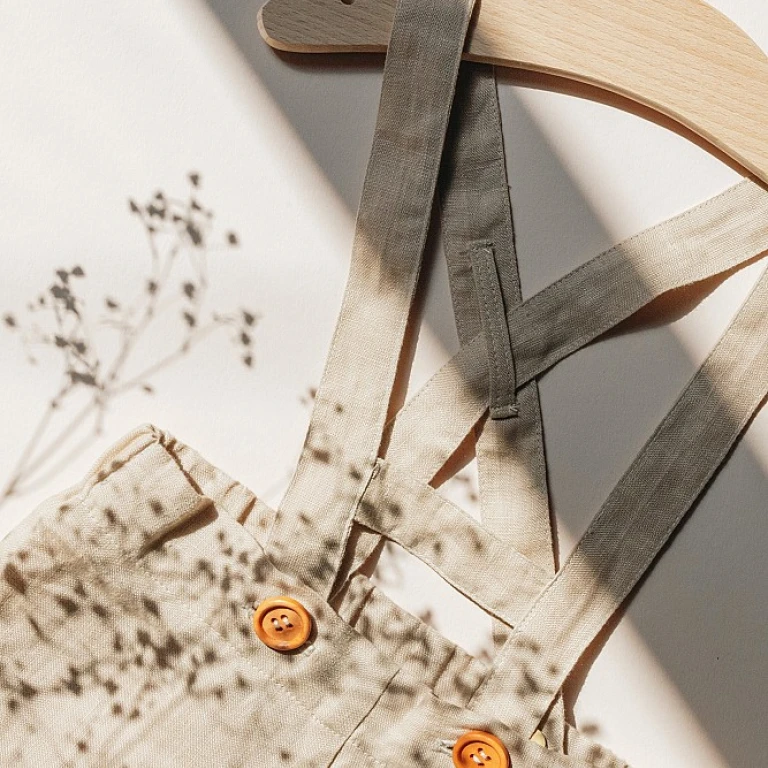

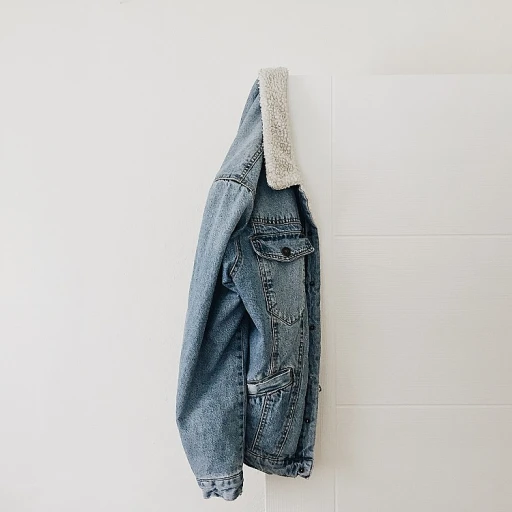

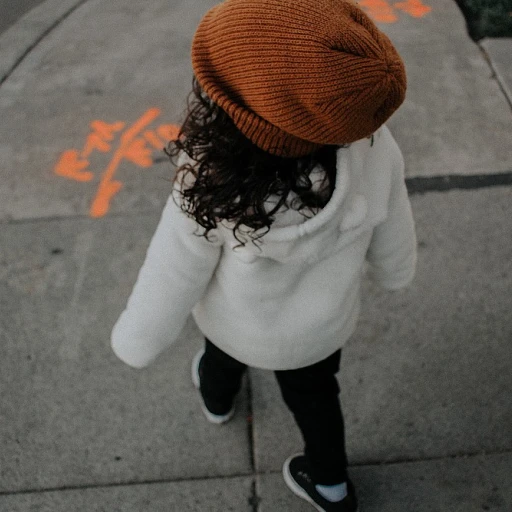
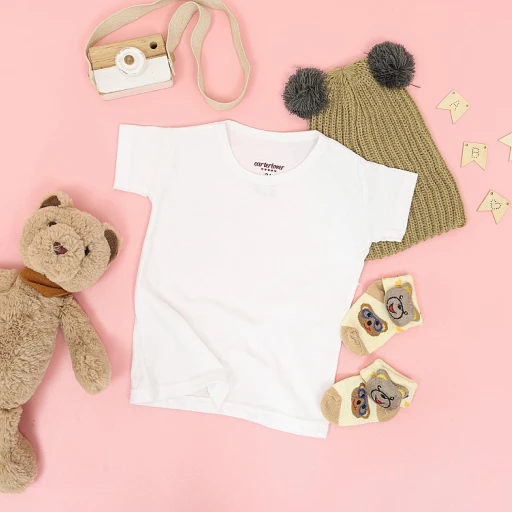
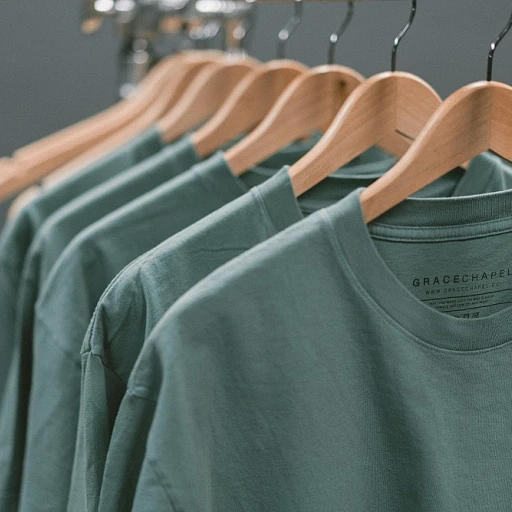
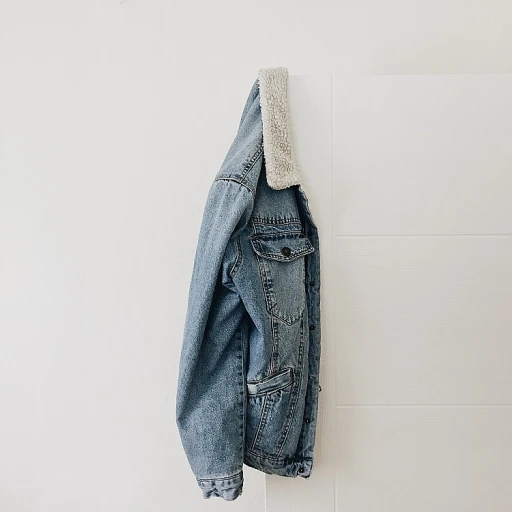
-large-teaser.webp)
